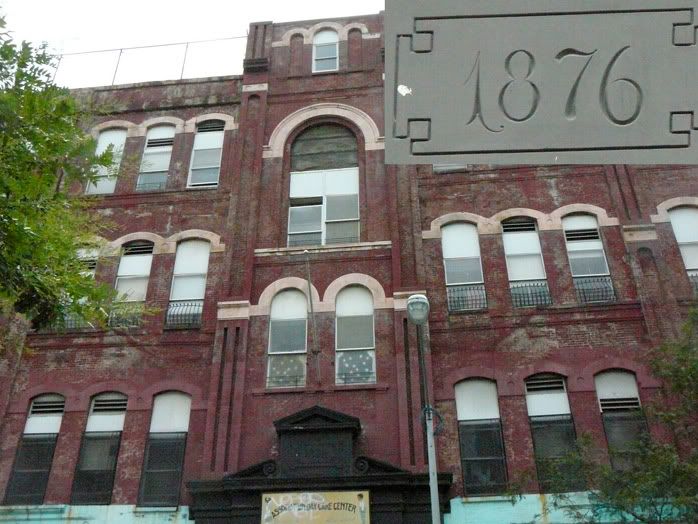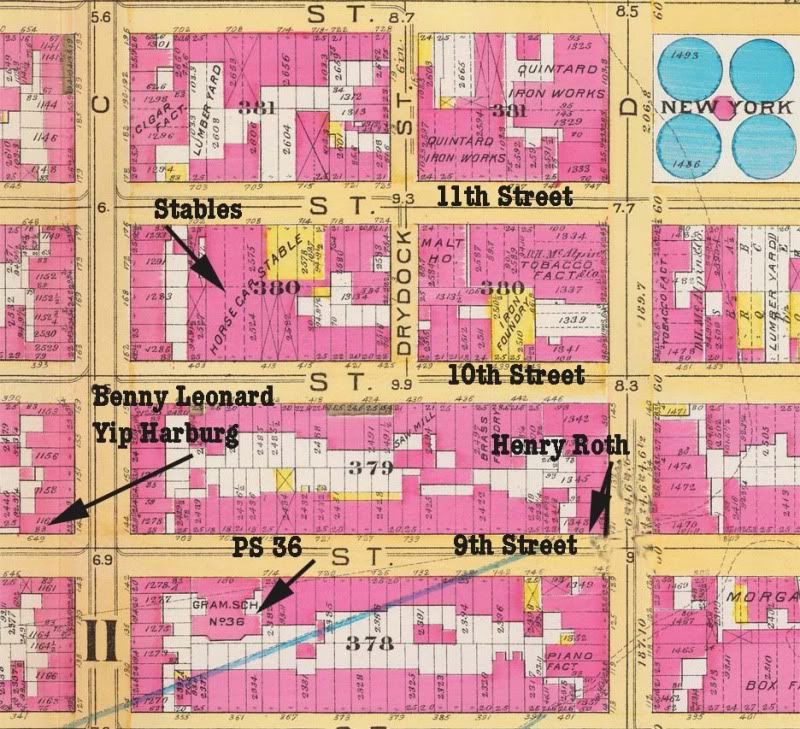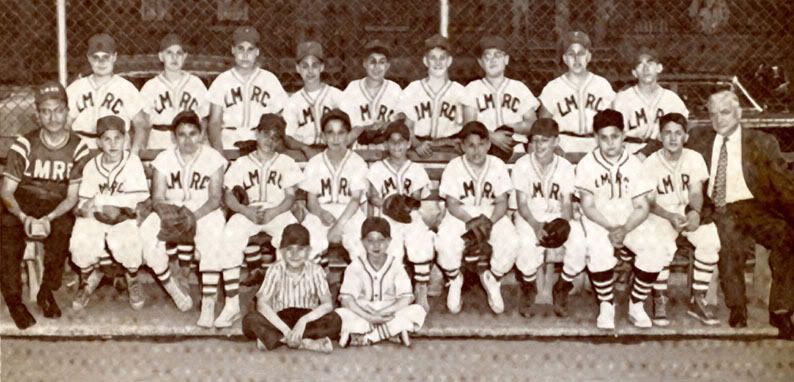Showing posts with label henry roth. Show all posts
Showing posts with label henry roth. Show all posts
Wednesday, June 16, 2010
Tuesday, June 15, 2010
Henry Roth On The Lower East Side 4
roth-bio
from Redemption: the life of Henry Roth By Steven G. Kellman and here I thought I was such a "big macher" because I figured out where Roth lived on the les when the information was available in his biography! Last night I heard a discussion about Roth's last book, An American Type . I have to admit I just don't get why Call It Sleep is considered such a masterpiece. There all kinds of reasons given by the panelists as to the motivation for his later writings. The discussion last night barely touched upon the aspect of Roth's life cited below. No wonder he was seeking redemption! By many accounts Roth wasn't the great guy that his editor, Robert Weil, was describing. For most people it is tough to rise above a brutalized childhood (Roth's father) to become the sweetheart that Weil encountered. An excerpt from the nyobserver
from Redemption: the life of Henry Roth By Steven G. Kellman and here I thought I was such a "big macher" because I figured out where Roth lived on the les when the information was available in his biography! Last night I heard a discussion about Roth's last book, An American Type . I have to admit I just don't get why Call It Sleep is considered such a masterpiece. There all kinds of reasons given by the panelists as to the motivation for his later writings. The discussion last night barely touched upon the aspect of Roth's life cited below. No wonder he was seeking redemption! By many accounts Roth wasn't the great guy that his editor, Robert Weil, was describing. For most people it is tough to rise above a brutalized childhood (Roth's father) to become the sweetheart that Weil encountered. An excerpt from the nyobserver
A Sister's Angry Letter Unravels Roth Incest Tale, By Elizabeth Manus, May 17, 1998
Did the late Henry Roth, like Ira Stigman, his fictional alter ego in the four-volume autobiographical novel Mercy of a Rude Stream , carry on an incestuous relationship with his sister? A newly revealed letter written to Roth by his younger sister, Rose Broder, and a curious contract agreement between the two, may finally help settle that question. The true nature of Roth's relationship with his sister–hinted at by Roth, tugged at by critics–has been pointed to as the reason for the decades-long writer's block that followed Roth's 1934 publication of the classic Call It Sleep . While finally writing, in veiled form, about brother-sister incest in 1995's A Diving Rock on the Hudson may have unblocked Roth's creative spirit, it unblocked something else in his sister. So troubled was Broder by the portrayal of Ira's lustful relationship with his younger sister that she threatened to sue Roth and his publisher, though it was unclear on what grounds. Eventually, Broder released Roth from the threat by accepting $10,000, and something of arguably even greater value: his agreement to edit out sibling incest material from the already written manuscripts of the remaining two volumes of his opus.
Saturday, June 12, 2010
Henry Roth's Sleepy Serenade
As mentioned before, I believe Roth may have lived at 749 E. 9th Street. The second image is of Henry with his father Hyman, his mother Lena and his sister Rose. It was taken in 1911.
Other images are representative of that era and area of the les from Berenice Abbott
below
an excerpt from the nytimes
Breathing Life Into Henry Roth
By CHARLES McGRATH
Published: May 23, 2010
The writer Henry Roth was a tortured, hard-luck case who at the end life enjoyed an unexpected redemption. Blocked for decades, full of doubt and self-loathing, he began writing again in his late 80s, even though crippled by rheumatoid arthritis, and finished four new novels, two of which he lived to see into print before his death in 1995. Now, almost miraculously, there is a fifth, “An American Type,” which W. W. Norton will publish on June 7.
That the book exists at all is largely due to the efforts of Willing Davidson, a 32-year-old fiction editor at The New Yorker, who in background and bearing couldn’t be less like the prickly, self-doubting Roth, but nevertheless felt a deep connection to his life and work.
“An American Type,” like everything Roth wrote, is autobiographical, and describes a trip he made to the West Coast and back in 1938, hitchhiking and riding on freight trains for part of the way. It’s by far the sunniest thing Roth ever wrote and ends with the marriage of Ira Stigman, his fictional alter ego, to a character called M, a stand-in for Muriel Parker, a composer who was married to Roth for 51 years of Job-like hardship.
Roth’s first novel, “Call It Sleep,” is now considered a classic, a luminous evocation of a Jewish immigrant childhood on the Lower East Side; but when it came out in 1934, it sold poorly and was attacked by left-wing critics for being too artsy and politically unaware. A chastened Roth, then an ardent Communist, determined to write a proletarian novel and worked on it unsuccessfully for years before finally burning most of it. In 1964 “Call It Sleep” was reissued in paperback, and in a front-page essay in The New York Times Book Review the critic Irving Howe called it “one of the few genuinely distinguished novels written by a 20th-century American.” Roth, however, tried to dissociate himself from the novel. “The man who wrote that book at the age of 27 is dead,” he said. “I am a totally different man.” He was living in self-imposed exile in rural Maine, where after a series of odd jobs and a stint as an attendant at the state mental hospital he was working as what he called a “waterfowl dresser,” slaughtering and plucking ducks and geese. He hadn’t published a word in years.
Henry Roth On The Lower East Side 2
roth-les-2
selected pages from Call It Sleep that reference the 9th Street and Avenue C and D area
selected pages from Call It Sleep that reference the 9th Street and Avenue C and D area
Henry Roth On The Lower East Side
On Monday June 14 the Museum at Eldridge Street hosting a Tenement Talk on Henry Roth
from kirjasto
Henry Roth: A panel at The Museum at EldridgeAccording to Roth's bio he lived for a while on the lower east side. I tried to figure out where and after re-reading parts of Call It Sleep I think I did. If the novel follows fact then the address is 749 E. 9th Street. (See page 432 of the 1964 Avon edition) Supposedly Roth lived on the lower east side between ages 6-9 (1911-1914) before his family moved to East Harlem. If he did his path might have crossed Benny Leonard, Yip Harburg, Sam Levene, Jimmy Cagney and my maternal grandparents. My mother wasn't born until 1919. They all lived on 9th street, near Avenue C. Leonard and Harburg both lived amazingly at 649 . 749 East 9th is on the NE corner of 9th and Avenue D. Artie Shaw was living about 6 blocks away. Roth could have gone to nearby PS 36. The book frequently mentions the stables that were nearby.
A discussion of the works of Henry Roth, author of the classic novel Call It Sleep with Harold Augenbaum, Executive Director of the National Book Foundation, Robert Weil, Executive Editor at Norton, and Willing Davidson, fiction editor at The New Yorker. THIS EVENT IS AT THE MUSEUM AT ELDRIDGE, 12 Eldridge near Division.
from kirjasto
Henry Roth was born in Tysmenica, Galicia, Austria-Hungary. His father was a waiter. Roth moved in 1907 with his mother to New York, where his father was already living. From 1908 to 1910 Roth's Yiddish- speaking family lived in the Brownsville section of Brooklyn and in 1910 they moved to the Lower East Side, "a virtual Jewish mini-state", as Roth later noted, and four years later to Harlem, an Irish and Italian neighborhood. Roth graduated from the City College of New York. During his college years he started to write. Roth was encouraged by the poet and professor of English literature Eda Lou Walton, 12 years his senior, with whom he lived in her Greenwich Village house. There he met such writers as Hart Crane and Margaret Mead.
Call It Sleep received moderate critical praise and went soon out of print and was forgotten. The story recorded six years in the life of a Jewish immigrant boy, a six- to eight-year-old David Schearl, in a New York ghetto just prior to World War I. David is shielded by his loving mother. His life turns in a nightmare when his paranoid father is unable to hold a job. David's father is tormented by his lack of success and he becomes increasingly menacing to the son, and is finally convinced that David is not his son. After he has survived a deathly initiation game, David closes his eyes, with his mother beside him, and "one might as well call it sleep."
Labels:
benny leonard,
henry roth,
Ward 17,
yip harburg
Subscribe to:
Posts (Atom)



























